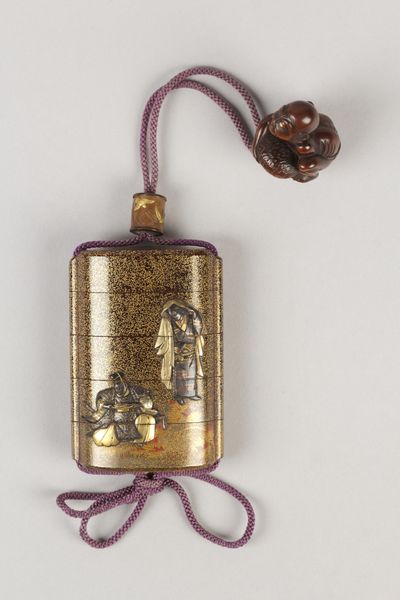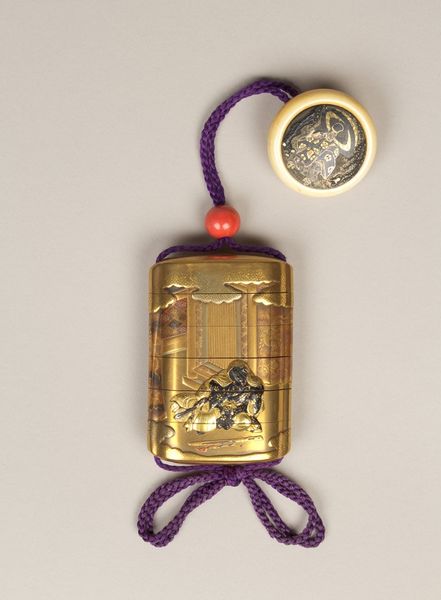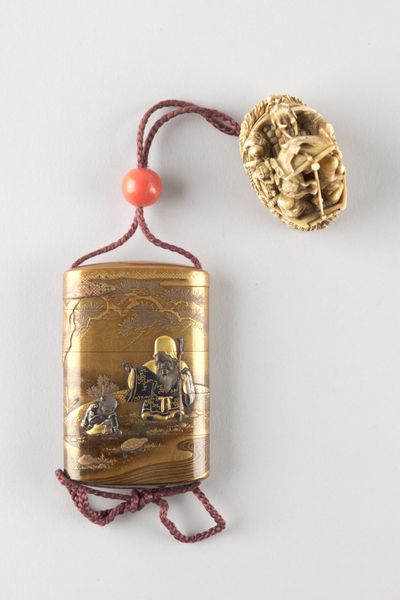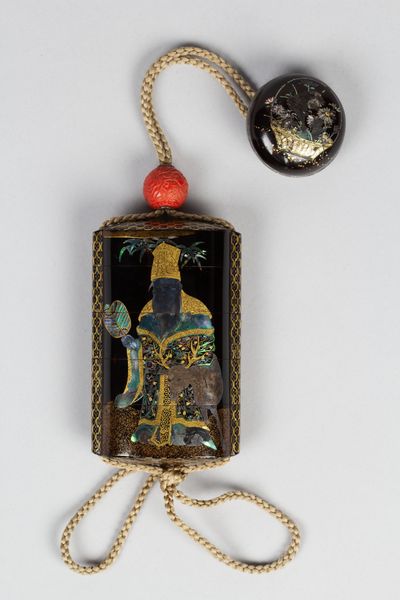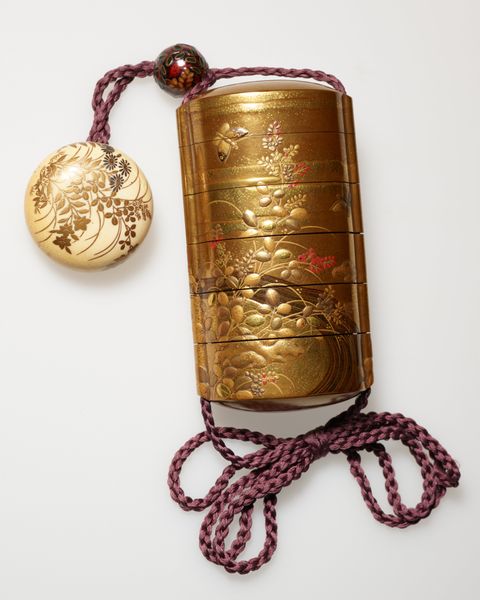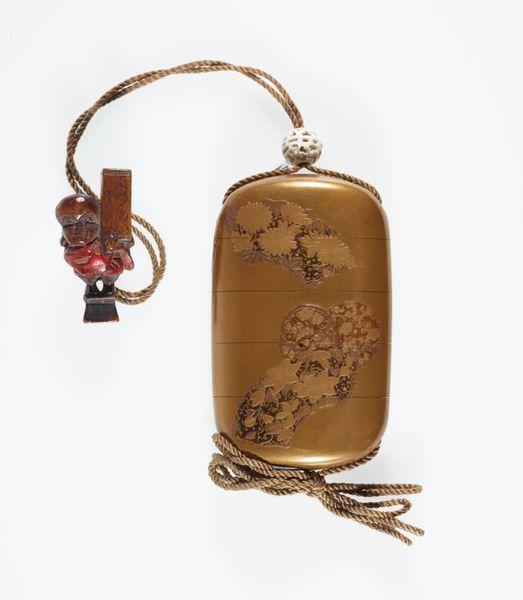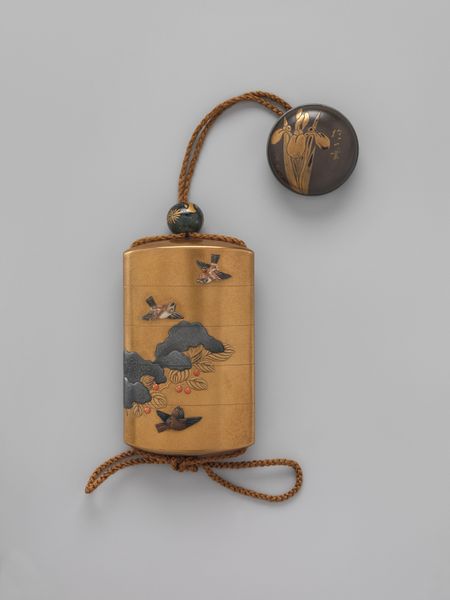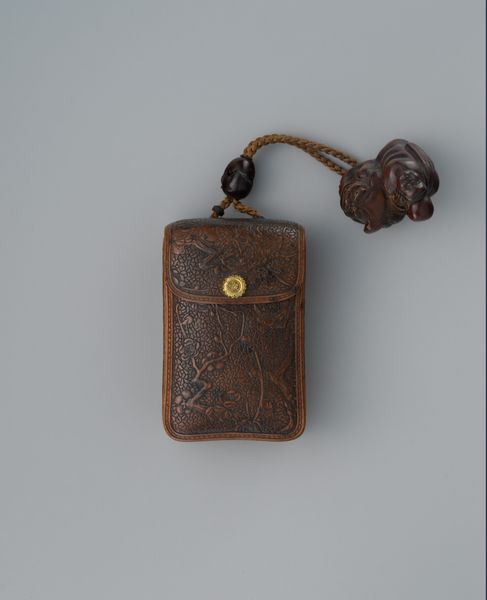
Inro Decorated with the Animals of the Zodiac c. 19th century
0:00
0:00
metal, sculpture
#
metal
#
asian-art
#
japan
#
sculpture
#
orientalism
#
miniature
Dimensions: 9 × 6 × 2.2 cm
Copyright: Public Domain
Curator: At first glance, the intricate detail on such a small scale is astonishing. It is easy to be impressed with the technical skill required to make this miniature sculpture, inro and netsuke. Editor: Indeed. What we’re observing is a 19th-century Inro, traditionally a case for holding small items, paired with a netsuke, a toggle to secure the inro to a sash. The piece is currently housed here at the Art Institute of Chicago and is attributed to Koma Kyuhaku. Curator: Knowing it’s from the 19th century adds another layer. One can consider this as part of a broader interest in orientalism, the fascination with Eastern cultures during that period. Did Koma Kyuhaku have direct connections to artisan workshops that were then gaining global attention? Editor: The social context is paramount, especially with items like these, which often circulated among elite social circles. The decorations showcase animals of the zodiac—a culturally loaded choice! How does its miniature form and precious material influence its significance and functionality? Curator: That zodiacal symbolism is so neatly integrated into the golden surface is impressive. Consider the labor invested, the skills, and even the very access to metal materials, it speaks to particular crafting and cultural traditions. How do its dimensions reflect or challenge social hierarchies of its time? Editor: Precisely. Moreover, we must consider how such objects functioned within gift-giving practices, status displays, and the negotiation of social relations. The visual power in circulating the cultural meaning within zodiac imagery offers insight into trade networks and social capital of the late Edo period. Curator: The gold and metalworking, along with the specific choices within the zodiac designs certainly mark a departure from mere function. What do you make of how it circulated – the consumption and the markets it engaged with? Editor: Right, to fully understand pieces like these, one needs to dive into the material culture and artistic innovation, with awareness for broader power dynamics and global exchanges of artistry that characterized this period. Curator: Thank you for drawing out those essential questions of value, production, and the globalized artistic currents in that era. It’s broadened how I perceive this tiny work of art. Editor: My pleasure. Hopefully, this exploration offered a wider scope of interpretation.
Comments
No comments
Be the first to comment and join the conversation on the ultimate creative platform.
